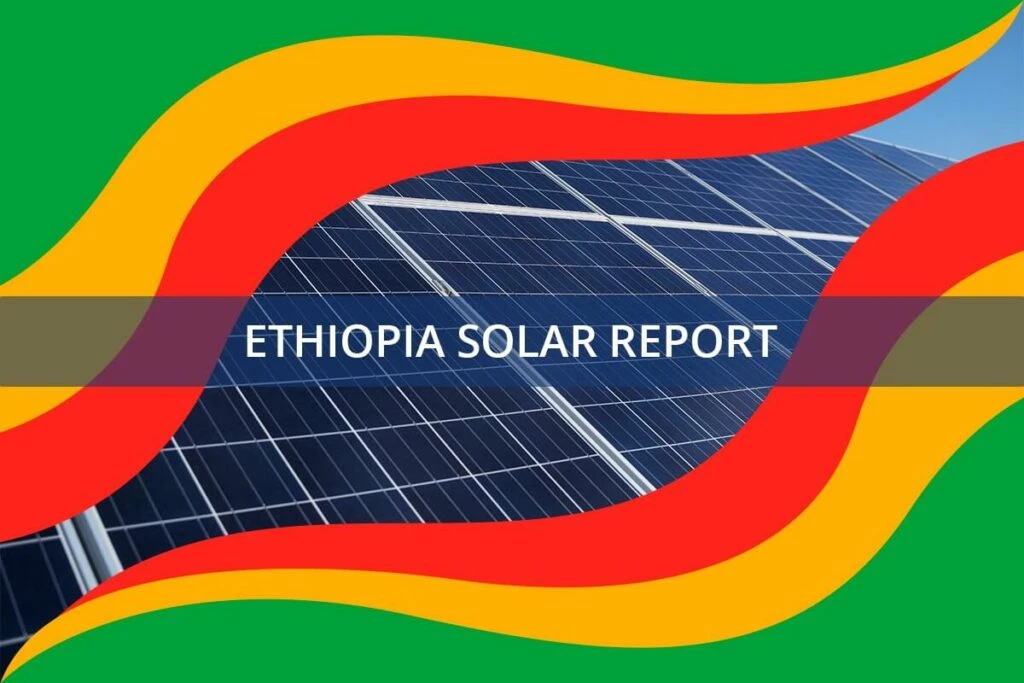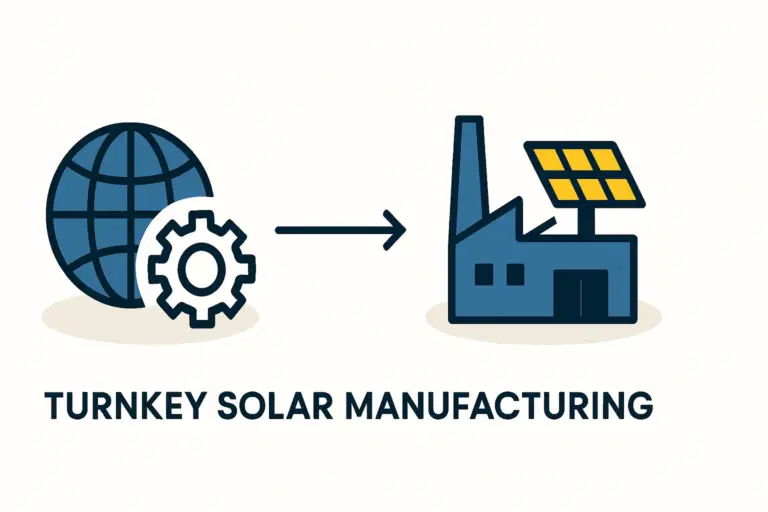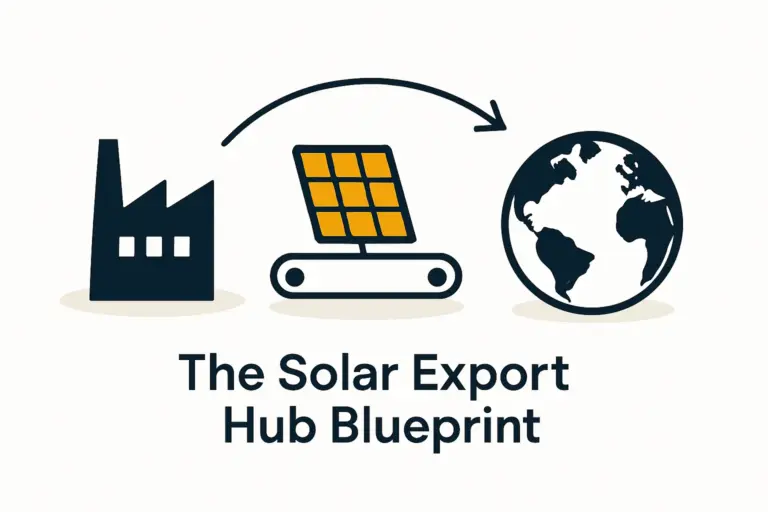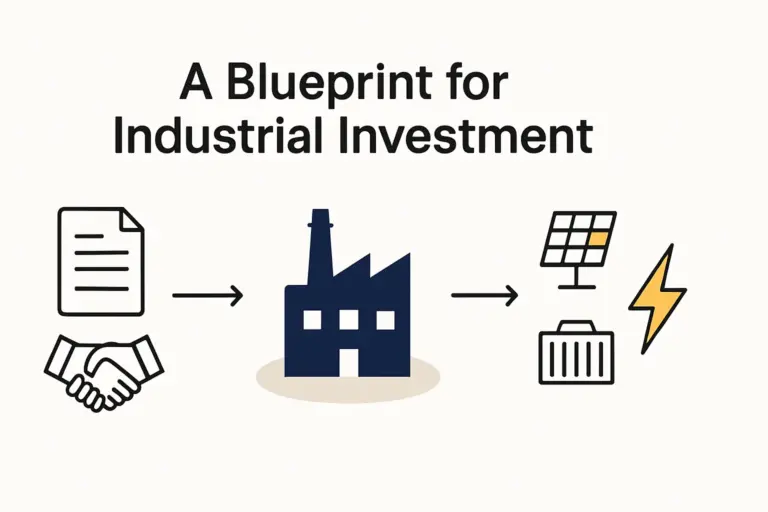For the international investor, Ethiopia presents a compelling but complex opportunity. The nation’s ambitious National Electrification Program (NEP 2.0) aims for universal energy access by 2025, with off-grid solar solutions set to supply a significant 35% of the population. This government-led initiative has opened the door to foreign direct investment, but navigating the local business landscape requires a strategic approach.
This article outlines a structured joint venture (JV) model for foreign investors looking to enter Ethiopia’s solar module manufacturing market. The proposed framework is designed to help investors partner with a local entity to mitigate risks, leverage local expertise, and establish a technologically sound operation built around a turnkey production line.
The Ethiopian Opportunity: A Market Primed for Growth
The Ethiopian government’s commitment to renewable energy is not merely policy; it is a core component of its economic development strategy. To attract foreign capital and technology, the government offers a range of incentives for investors in the renewables sector. These often include:
-
Income Tax Holidays: Exemption from income tax for periods of up to six years, depending on the project’s location and export focus.
-
Customs Duty Exemptions: Capital goods, machinery, and construction materials needed for an investment project can typically be imported free of customs duties.
Beyond these fiscal incentives, the fundamental market driver is the NEP 2.0. This program creates substantial, long-term demand for solar modules that are robust, affordable, and suited for off-grid applications. Establishing a local assembly plant aligns directly with national priorities for job creation, technology transfer, and industrialization. As a result, such ventures are viewed favorably by regulatory bodies.

Navigating the Challenges: Why a Local Partnership is Essential
While the opportunity is significant, Ethiopia presents unique operational challenges. Foreign exchange shortages, bureaucratic complexities, and a rapidly evolving regulatory environment can pose considerable hurdles for investors operating alone. A well-structured joint venture with a reputable local partner is the most effective strategy for navigating this landscape.
A local partner brings indispensable value by providing:
-
Regulatory Navigation: Expertise in securing business licenses, permits, and navigating administrative processes.
-
Access to Land and Resources: Facilitating the acquisition or lease of suitable industrial land.
-
Local Market Intelligence: Deep understanding of distribution channels, labor markets, and customer needs.
-
Government Relations: Established networks and communication channels with key ministries and agencies.
By combining the local partner’s on-the-ground capabilities with the foreign investor’s capital and technical expertise, the JV becomes a resilient and well-positioned enterprise.

A Structured Approach: The Turnkey Joint Venture Model
The proposed model involves establishing a new, legally distinct JV company in Ethiopia, jointly owned by the foreign investor and the local Ethiopian partner. This structure provides clarity on ownership, responsibilities, and profit distribution from the outset.
Legal Framework
The foundation of the JV is a comprehensive shareholder agreement. Drafted with the support of legal counsel experienced in Ethiopian investment law, this document must clearly define:
-
Ownership Stakes: The percentage of equity held by each partner.
-
Board Composition and Governance: How the company will be managed and how decisions will be made.
-
Roles and Responsibilities: A clear delineation of duties for each partner.
-
Profit Distribution: The mechanism for sharing profits.
-
Exit Strategy: Pre-defined conditions under which a partner can exit the venture.
Financial Structure
Capital contributions are structured to leverage each partner’s strengths and mitigate financial risks, particularly those related to foreign currency. A typical arrangement involves:
-
Foreign Investor’s Contribution: Primarily ‘in-kind’ capital, including the machinery for the turnkey solar production line and the necessary foreign currency for initial raw material imports. This minimizes the need to convert large sums of foreign currency into Ethiopian Birr. The total investment for a solar module factory is shared and de-risked.
-
Local Partner’s Contribution: Land, a factory building, and local currency for operational expenses like salaries, utilities, and local services. This leverages the partner’s existing assets and avoids currency conversion challenges for the foreign investor.
Operational Plan and Technology Transfer
The operational core of the JV is the solar module factory itself. For an investor without a deep technical background in photovoltaics, a turnkey solution is the most efficient path to market.
A turnkey supplier, such as J.v.G. Technology GmbH, provides a complete production ecosystem. Drawing on experience from numerous turnkey projects in Africa and other emerging markets, this approach ensures the facility is built on a proven foundation. The comprehensive package includes the planning, delivery, installation, and commissioning of all required machinery for the solar module manufacturing process. Crucially, it also includes hands-on training for local staff, facilitating genuine technology transfer and ensuring the facility meets international quality standards from day one.
This model transforms a complex technical undertaking into a manageable business project, allowing the JV’s leadership to focus on market strategy and operations rather than engineering intricacies.

Mitigating Risk and Aligning with National Goals
This JV model systematically addresses the primary risks associated with foreign investment in emerging markets.
-
Regulatory and Political Risk: A strong local partner provides stability and a crucial interface with administrative and political systems.
-
Financial Risk: The shared investment structure and strategic allocation of currency responsibilities reduce exposure to foreign exchange volatility.
-
Operational Risk: A high-quality turnkey production line from an experienced provider ensures technical viability and predictable output, minimizing the learning curve and accelerating time-to-market.
By establishing a local manufacturing presence, the JV also directly supports Ethiopia’s economic objectives. It creates skilled jobs, builds local industrial capacity, and contributes to the nation’s energy independence—making it a welcome and supported venture.
Frequently Asked Questions (FAQ)
What is the typical timeline for establishing a JV and factory in Ethiopia?
From signing a shareholder agreement to commencing production, a timeline of 12 to 18 months is realistic. This includes company registration, land acquisition, factory construction, and machine installation.
What kind of legal support is essential?
Engaging a reputable Ethiopian law firm with experience in foreign direct investment (FDI) is critical. They will guide the process of company formation, investment licensing, and drafting a robust shareholder agreement.
How are profits repatriated for the foreign investor?
Repatriation of profits is legally permitted but can be subject to delays due to foreign currency shortages. The JV’s financial strategy should plan for this, potentially by reinvesting a portion of profits locally or structuring dividend payments over longer periods. This is a key area where a local partner’s financial management expertise is invaluable.
What is the role of the foreign investor after the factory is operational?
Typically, the foreign investor continues to play a strategic role on the board of directors. They may also oversee supply chain management for imported raw materials, international quality control standards, and potential export strategies.
Conclusion and Next Steps
Entering Ethiopia’s solar market through a turnkey joint venture offers a balanced, de-risked, and strategically sound approach. It transforms potential obstacles into manageable challenges by combining local expertise with international capital and proven technology.
This model not only creates a commercially viable enterprise but also aligns perfectly with Ethiopia’s national development goals, fostering a positive and sustainable investment environment. For business professionals without a background in solar technology, this framework demonstrates that entry into this high-growth industry is achievable. With the right partners and a structured plan, investors can build a successful manufacturing operation that powers progress in one of Africa’s most dynamic economies.




